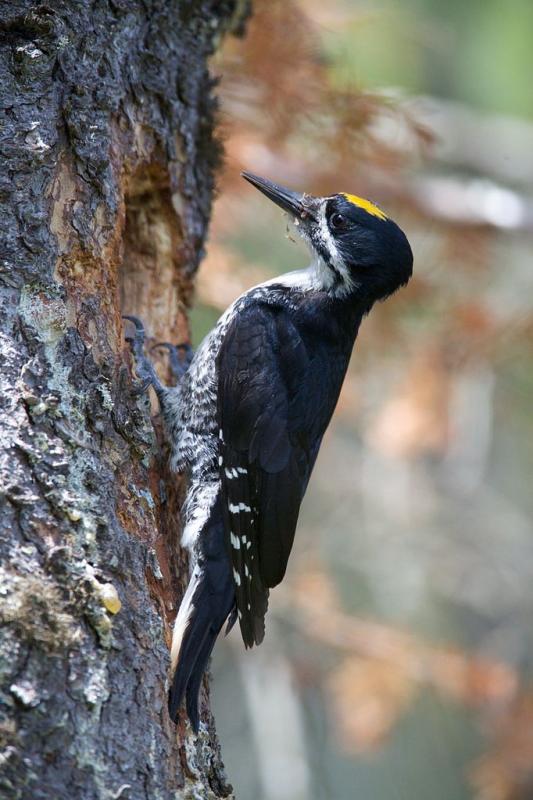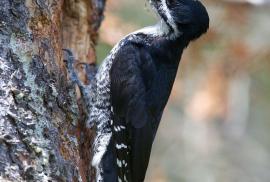Guide to Boreal Birds
Overview
Dead conifers with large areas of peeled bark generally indicate the presence of this uncommon woodpecker. When alarmed, it quickly sidles to the far side of the tree and reappears cautiously. If frightened, the bird flies away, often calling sharply. Like the Three-toed Woodpecker, this species has only three toes on each foot.
No bird species is more closely tied to burned forest. Although rare in most of its range this species can be common in coniferous forests affected by fire, flood or windthrow. Black-backed Woodpeckers depend heavily on the larvae of wood-boring bark beetles that increase in the wake of these natural disturbances. While individual birds invade burns immediately after fire, it appears that habitat is only suitable for the first years following a fire, as long as wood-boring insects are abundant. Because fires are relatively rare occurrences in natural landscapes, Black-backed Woodpeckers likely move large distances to the find post-fire habitats they require. Because of its rarity, population trends are poorly understood, but the species faces significant threats of habitat loss from fire suppression, loss of mature and old-growth forests, and the removal of snags and insect-infested trees by salvage logging.
Description
9" (23 cm). A robin-sized woodpecker. Solid black back, barred flanks, white below. Male has yellow crown; female has solid black crown. See Three-toed Woodpecker.
Voice
A sharp, fast kyik and a scolding rattle.
Nesting
4 white eggs in a cavity excavated in a tree, often rather close to ground.
Habitat
Coniferous forests in the boreal zone, especially where burned, logged, or swampy.
Range/Migration
Resident from Alaska east across Canada to the northernmost United States and south to the mountains of California, Wyoming, and South Dakota in West.



